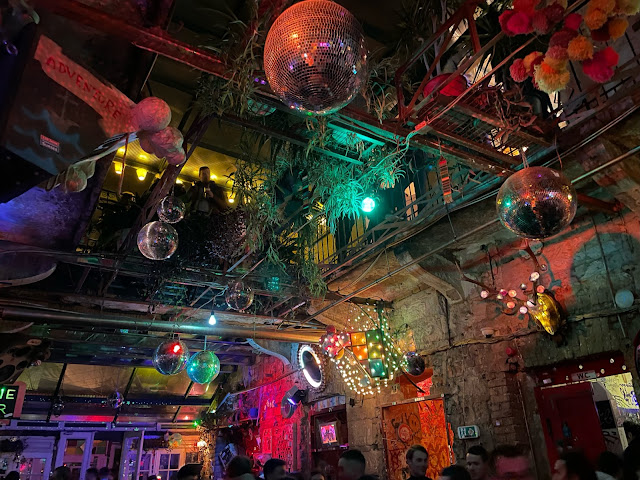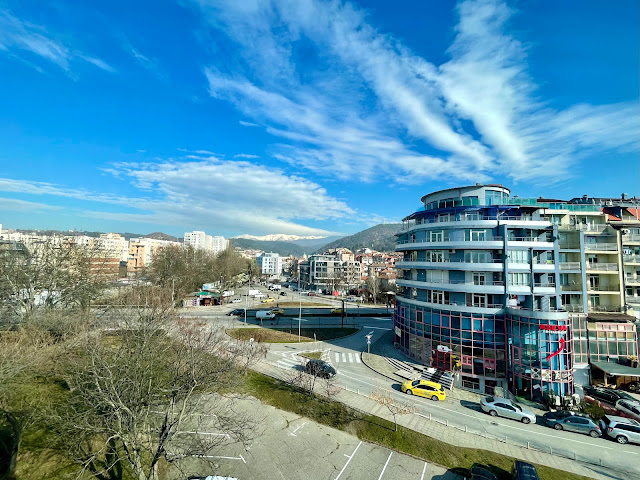Week 8 - Budapest
This week...
Four friends and I spent the slightly snowy four-day weekend in Budapest, Hungary. Budapest is a bucket-list city of mine, and it was everything I had hoped it would be. We stayed in an flat in the center of the lively and bustling District VII on the Pest side. Budapest is split into two parts: Buda on the west side of the Danube River, and Pest on the east side. Budapest has only been a single city since 1873, when the cities of Buda, Pest, and Óbuda unified. Pest is modern and active while Buda is hilly and historical.
A weekend filled with beautiful architecture, nice people, and an amazing atmosphere made for the best trip yet.
I Learned...
On the Pest side, we visited the St. Stephen's Basilica, the Shoes on the Danube Memorial, and the Hungarian Parliament building.
St. Stephen's Basilica
For a small fee, you can climb to the top of the St. Stephen's Basilica to see the 360° panoramic view (shown at the top of this page), and it is worth every forint. From this center point, you can see all sides of Budapest, from the Parliament building to the Chain Bridge to the Buda Castle. You might even get lucky by being on the top of the Basilica when the church bells ring.
The basilica was built in honor of Stephen, the first King of Hungary, and was completed in 1905 after 54 years of construction. Its interior is magnificently decorated with intricately carved sculptures and detailed paintings. The massive domes, gold embellishments, and royal purple drapery make this Roman Catholic basilica the most beautiful church I have ever seen.
Shoes on the Danube Memorial
On the east bank of the Danube lies a row of sixty pairs of 1940s-style iron shoes set into the concrete. The toes of the shoes point to the water, as if their owners were gazing onto the river. These iron shoes are a memorial to the Hungarian Jews who were murdered in the winter of 1944-1945 by members of the Arrow Cross Party, a pro-Nazi party whose power was strengthened after Germany's occupation of Hungary in March of 1944.
The militiamen would line up sixty Jews at a time against the riverbank, force them to remove their shoes - as shoes were a valuable commodity and could be traded or sold by the militiamen - and shoot them, having their bodies fall into the water to be washed away down the river. Sometimes, the militiamen would remove the Jews' shoelaces and tie neighboring victims' wrists together and shoot the victim on the end. If done correctly, the shot victim's body would fall into the water, dragging everyone he/she was tied to into the river.
Standing in the silence of this uncanny memorial was surreal. The shoes are incredibly tangible with worn spots, folds, and creases. There are men's shoes, women's shoes, and children's shoes; there are work boots, business dress shoes, and high heels. None of the Jews, no matter their age or social status, were safe from these horrific acts.
Hungarian Parliament Building
North of the Shoes on the Danube Memorial is the Hungarian Parliament building. Its beauty shines up close through intricate detailing in the architecture. However, to get the full view of the parliament building, it must be seen from across the river, especially at night.
Fisherman's Bastion
On the Buda side of Budapest, the best view of the city is from one of the seven towers of the Fisherman's Bastion, a fortress built for the panoramic viewing of Budapest. Finished in 1902, it was built in celebration of the 1000th birthday Hungarian state.
I Ate...
A must-visit for brunch in Budapest is Cirkusz Café. It had a great atmosphere and served us one of our best meals. The eggs Benedict was my dish of choice.
Goulash
I knew I needed to try goulash while in Hungary, and it did not disappoint. It was wonderfully seasoned and served over a scrumptious egg noodle similar to spätzle.
Kürtőskalács
Walking down the street I caught a scent of the most divine combination of fried dough and sugar. Following my nose, I found a truck serving Kürtőskalács, a Romanian dessert that is popular in Hungary. It's made of dough rolled around a spit and then grilled - though it smells like it's fried - and topped with a walnut sugar mix. The key is to get one that is served with ice cream, where the kürtőskalác acts as a cone.
I Experienced...
Budapest has the best atmosphere and overall vibe, better than any other city I've visited. It is such a lively place that attracts tons of young visitors from all over the world. Not to mention, most everyone is incredibly friendly.
Ruin Bars
There's a type of unique bar in Budapest called ruin bars. They are extremely popular in District VII, the Jewish Quarter. Buildings that had been abandoned after World War II were slowly renovated in the early 2000s into cheap bars for young nightlife. The most famous of these bars is Szimpla Kert, another must-visit of Budapest. It is a large two-level building with several bar corners and a garden. There are numerous rooms, each decorated differently and some even having different music than the rest of the bar.
Forint
Something else to note is that the Hungarian currency is fascinating. One US dollar is equal to 339.36 Hungarian forint, so forint bills are in the amounts of 500, 1,000, 2,000, 5,000, 10,000, and 20,000, and in the colors of red, blue, brown, yellow, purple, and green, respectively.
I fell in love with Budapest, so much so that I plan to return soon, though there are many other destinations on my list. This trip was yet another reminder of how blessed I am. I'm forever thankful I took this opportunity to study abroad and have these extraordinary experiences.
Julia Dick
References
Becchi, Michela. “Origins and History of Ruin Bars in Budapest.” Gambero Rosso International, Gambero Rosso SPA, 25 June 2021, https://www.gamberorossointernational.com/news/en-hp-cover/origins-and-history-of-budapests-ruin-bars/#:~:text=Origins%20of%20ruin%20bars&text=The%20creators%20of%20Szimpla%20Kert,of%20buildings%20on%20Kazinczky%20Street.
eJamo.com. “St. Stephen's Basilica.” Budapest, EJamo.com, 16 Dec. 2021, https://www.budapest.org/en/st-stephens-basilica/.
“History of Fisherman's Bastion - Buda Castle, Budapest.” Fisherman's Bastion, 22 Feb. 2013, https://fishermansbastion.com/history.
Ochayon, Sheryl Silver. “The Shoes on the Danube Promenade – Commemoration of the Tragedy.” Yad Vashem. The World Holocaust Remembrance Center, Yad Vashem, https://www.yadvashem.org/articles/general/shoes-on-the-danube-promenade.html.












Fascinating! So well written that I feel like I'm traveling with you! I know it takes time from your adventures to write but I so appreciate it! Very intriguing, sis!!
ReplyDelete